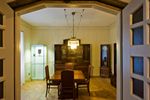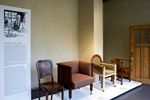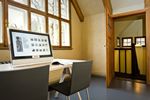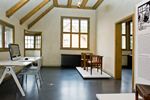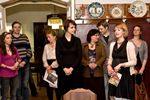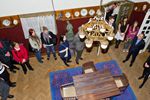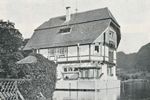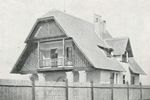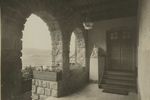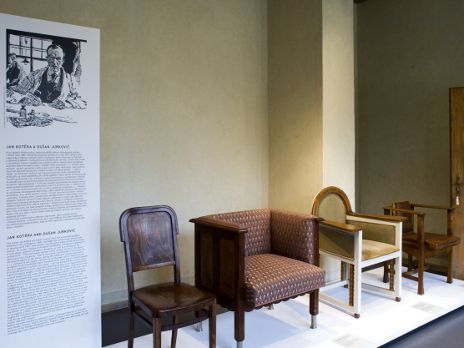
For the first time side by side this exhibition will show two founding fathers of modern architecture in this country — Jan Kotěra and Dušan Jurkovič - as artists who in their own special way respected folk art as an important source of inspiration for modern architecture and decorative art.
The father of modern architecture in the country, Jan Kotěra,
belonged to a circle of friends and admirers of Dušan Jurkovič.
Both worshipped folk art and used it as important inspiration for
modern architecture and applied art. Jurkovič had this instilled
into him by his parental upbringing and in his oeuvre he gradually
worked his way to an increasingly more "academic" way of working
with this source of inspiration. In contrast, Jan Kotěra perceived
folk art exclusively from the position of trained academic. He
adopted Semper's postulate to be inspired by folk art during his
study under Otto Wagner in Vienna. After his return to Prague he
found himself in a situation where he was expected to come up with
a new artistic expression, showing the way to his pupils and peers.
Inspiration from folk art could not be avoided as the 1895
Ethnographic Exhibition was still the talk of the town and the
Prague milieu explicitly required it. Kotěra's work from the
beginning of the 20th century features many forms distilled from
folk art.
Kotěra openly declared his admiration for Jurkovič, especially in
his defence of Jurkovič's concept for the buildings in the spa town
of Luhačovice. After the completion of the Dušan Jurkovič House he
also set his pupils the theme of their examination project: house
from cork.
The exhibition will present an aspect to Kotěra' work where his
affinity to folk art comes to the forefront the most. The different
completed projects will be divided into groups based on the
architect's approach to working with folk motifs. The subject of
the "Czech villa" will be based on projects such as the Trmal House
in Prague (1902), the Tonder House in St. Gilgen (1905) and the
Sucharda House in Prague-Bubeneč (1906-1907). The theme of the
implementation of the folk style in "national" buildings will be
presented using the examples of the National House in Prostějov
(1905-1907) and the Museum in Hradec Králové (1906-1913).
The reception salon of the Jurkovič House, which Jurkovič saw as a
showroom where visitors would become acquainted with modern housing
in the form of a furnished room, will show Kotěra's furniture for
the dining room of Franta Anýž from 1907 from the collections of
the Moravian Gallery in Brno. It is a remarkable modernist set in
the Viennese style.
___
Entry upon reservation only. Guided tours can be booked online.

